
Where We Be
| The Garden Tomb is an alternate location for the tomb of Jesus. It meets a lot of the requirements: it is hewn from solid rock, is set in a garden, was sealed by a large rolling stone (note the channel beneath the door), has space for several mourners within, and was the tomb of a wealthy man. |
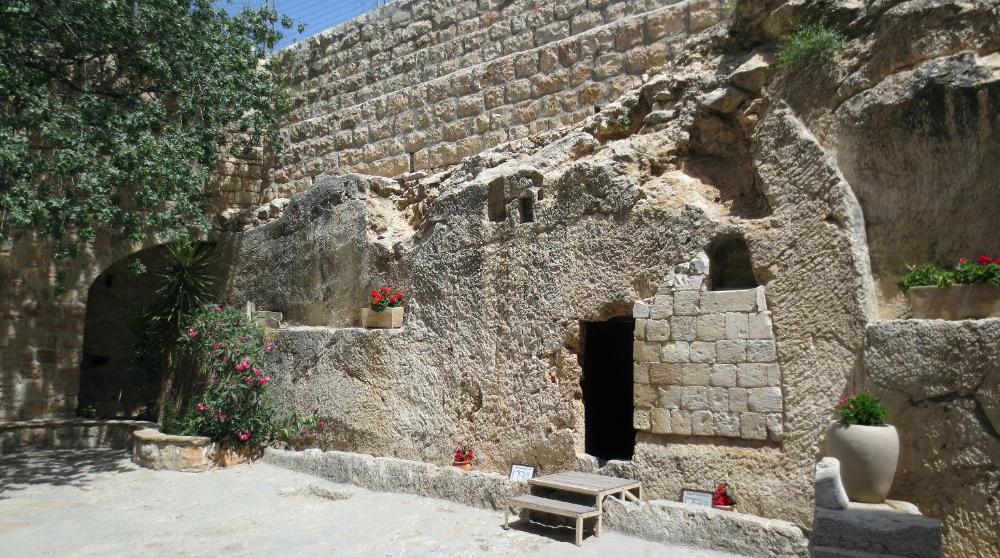
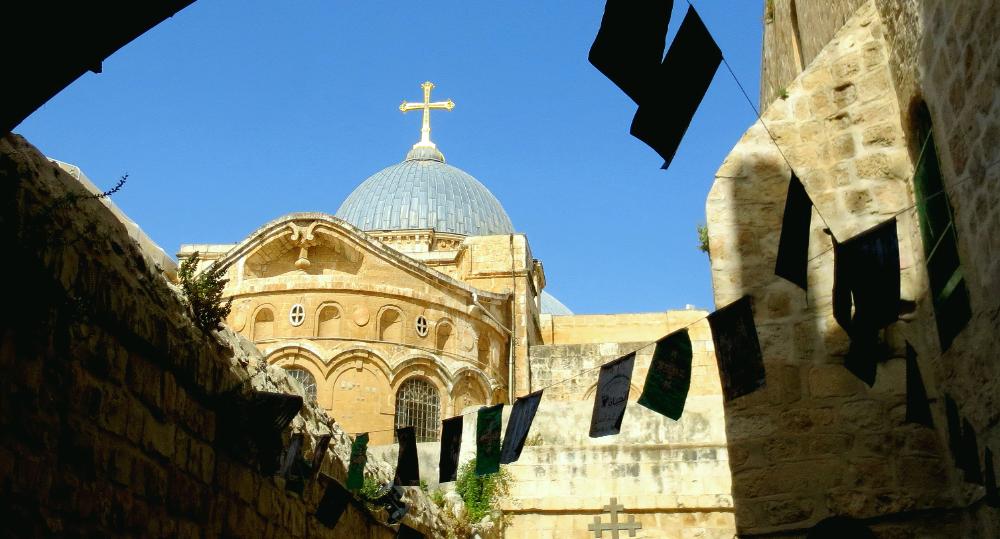
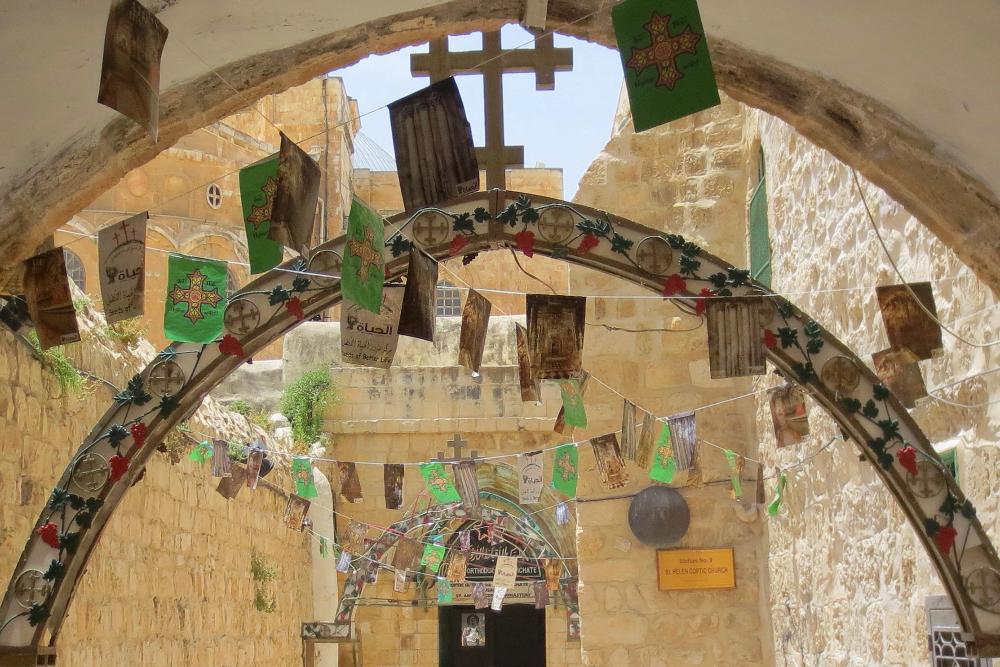
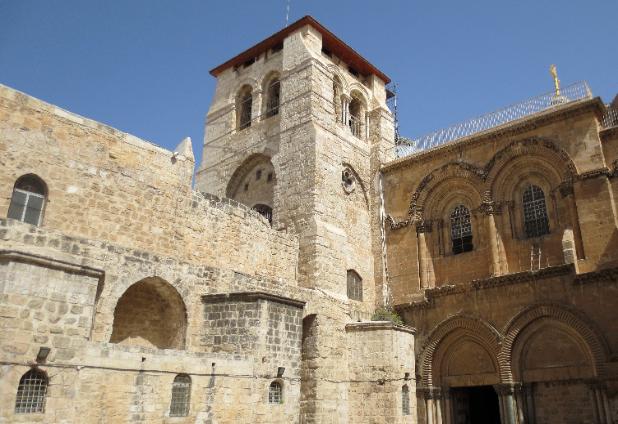
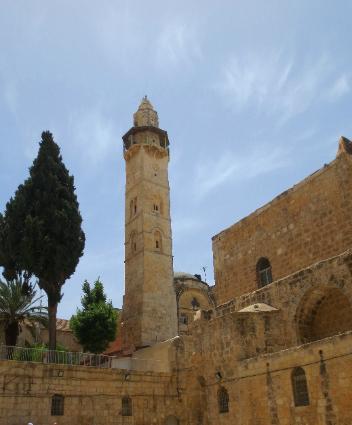
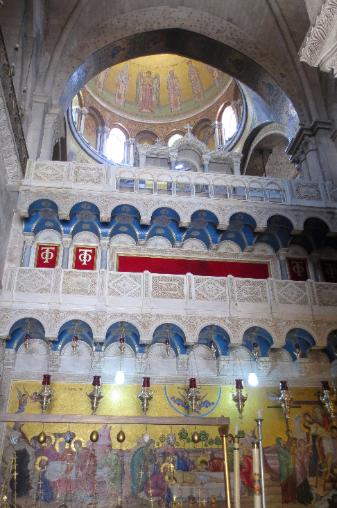
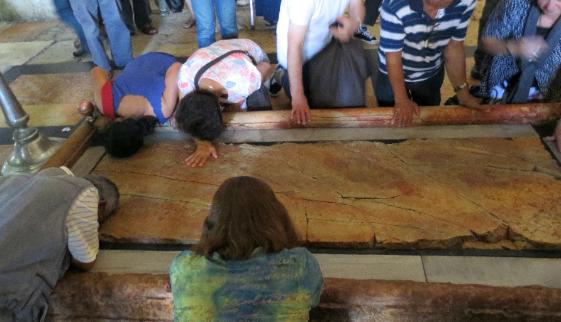
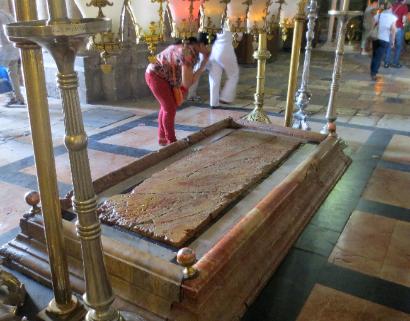
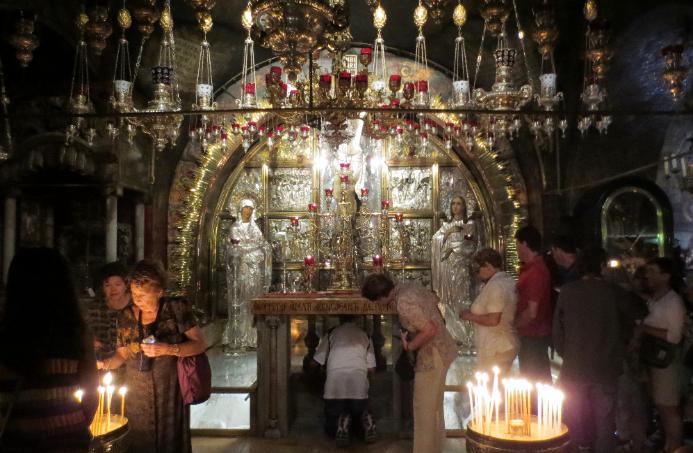
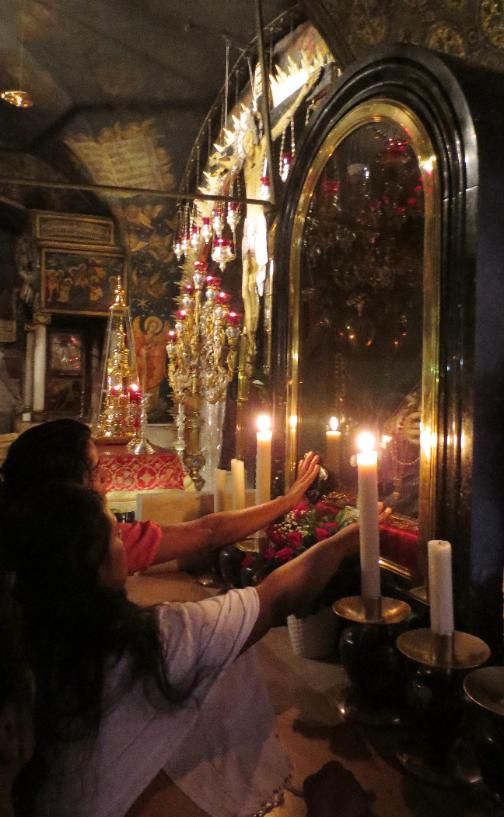
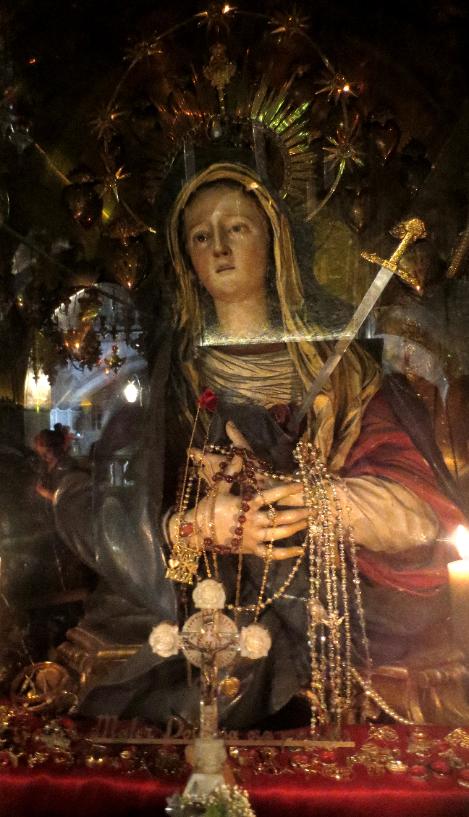
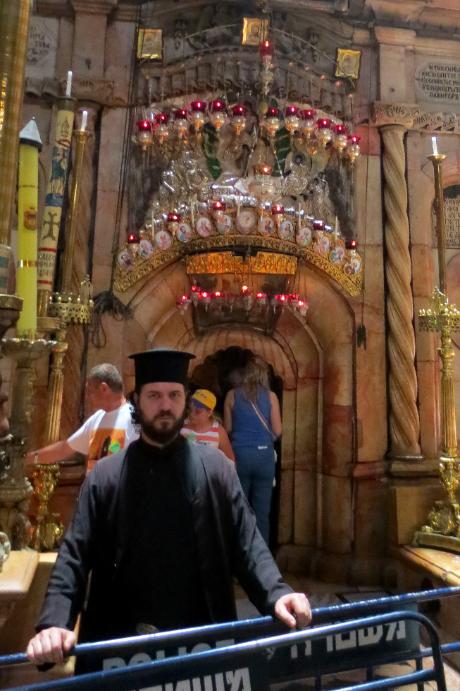
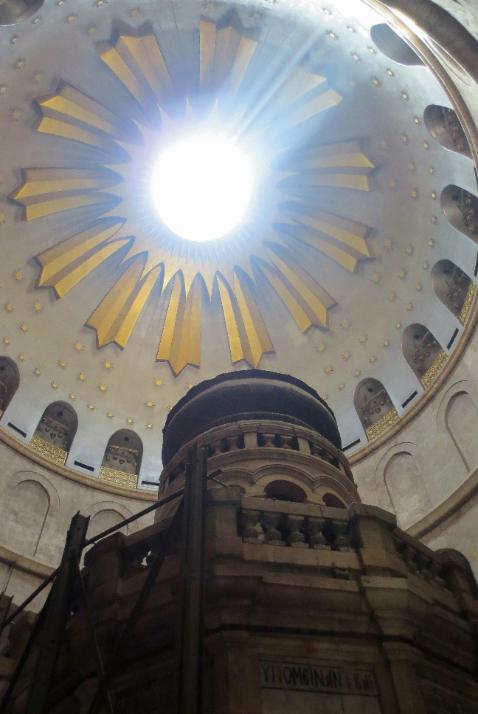
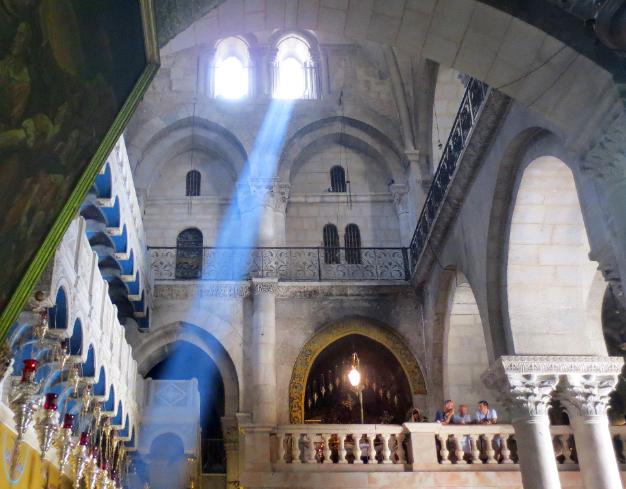
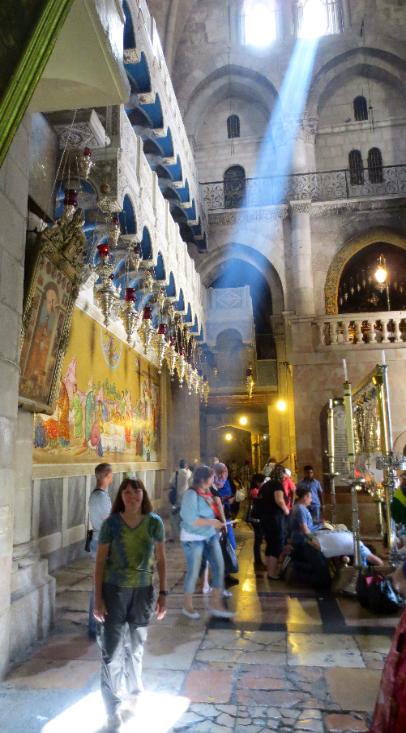
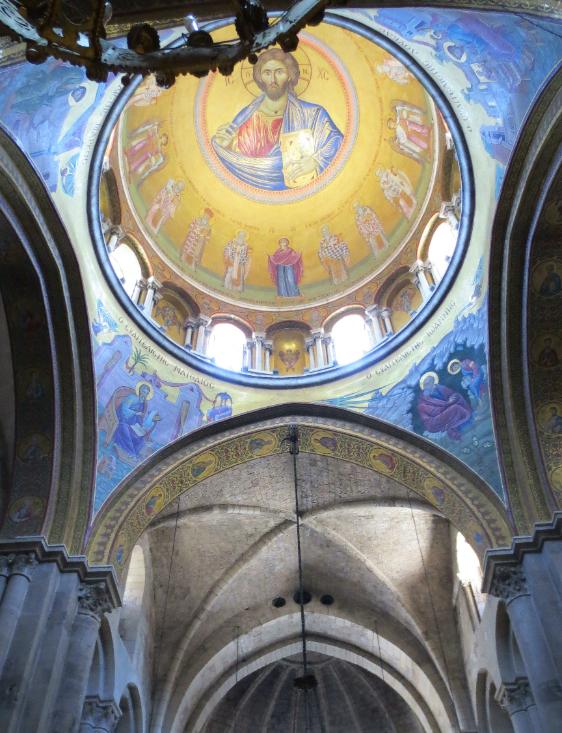
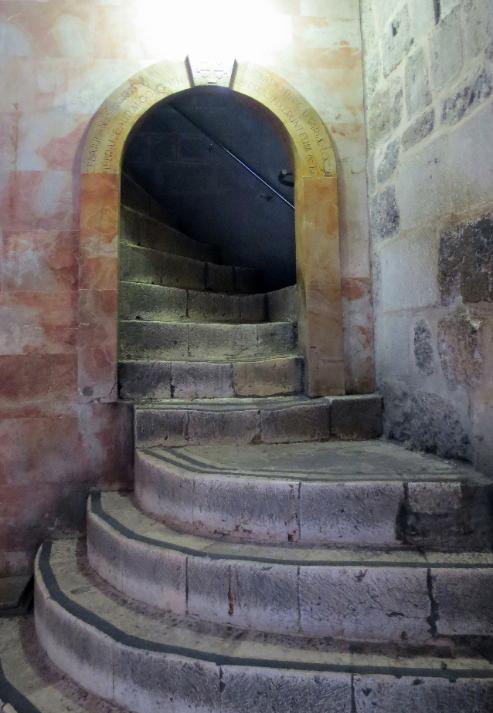
| The Church of the Holy Sepulchre has been an important Christian pilgrimage destination since at least the 4th century |
| Christian Quarter -- Jerusalem, Israel |
| The ornate decoration above the Stone of Unction includes a large painting showing Jesus crucifixion, preparation for burial, and burial |
| Stations 10 through 14 are all inside the Church of the Holy Sepulchre (10: Jesus is stripped of his clothes; 11: he is nailed to the cross; 12: he dies on the cross; 13: he is taken down from the cross; and 14: he is laid in the tomb) |
| The flag-bedecked entryway reminds us of Tibetan prayer flags in Nepal |
| Just inside the entrance is the Stone of Unction, which marks the spot where Jesus' body was prepared for burial, according to tradition |
| Just to the left of the altar is this statue of Mary, which also marks the 13th station, the traditional spot where Jesus' body was taken down from the cross and given to his family |
| On the second floor is an altar that marks the traditional spot of Golgotha, or Calvary, where Jesus was crucified. Beneath the altar (where the man is kneeling) is a hole that is said to be the spot where the cross was raised. |
| Beautiful light streams in above the Holy Sepulchre |
| Inside the church's main rotunda is the Holy Sepulchre itself, located within the elaborate chapel shown above. The line to get in is long, and a stern Greek Orthodox priest keeps a sharp eye out for possible line-breakers. |
| Don't forget to look up |
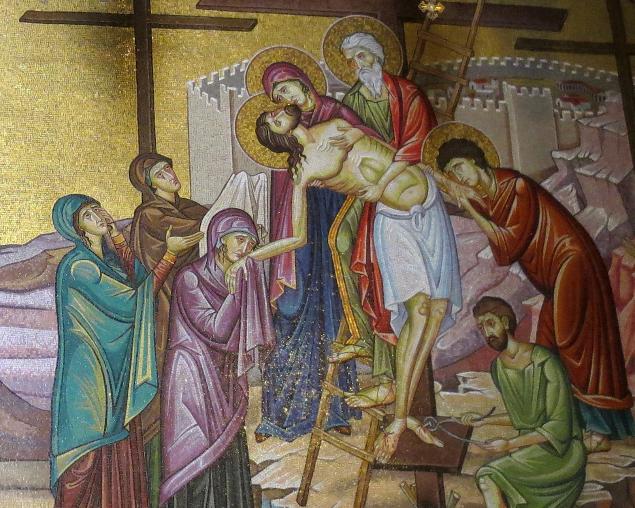
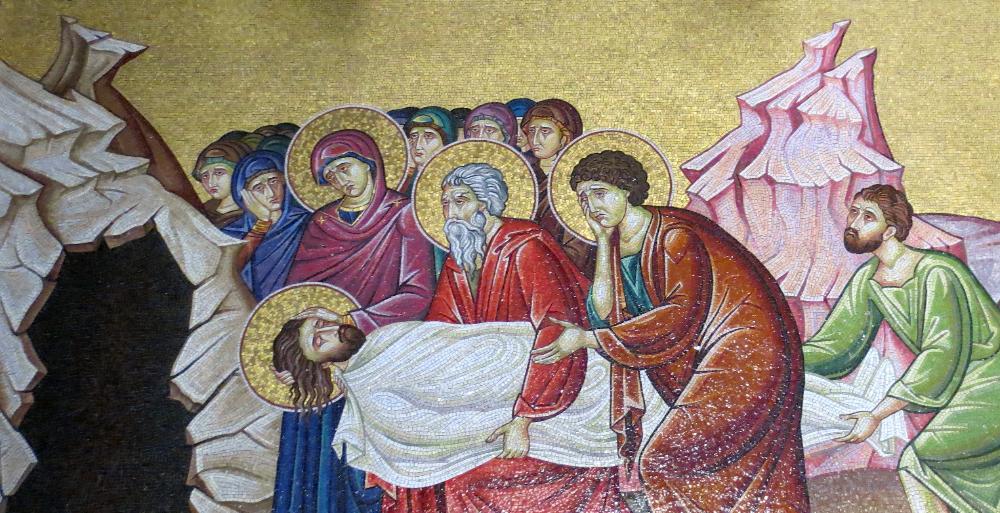
| At Station 6, Veronica, moved with pity, wipes Jesus' face with her veil |
| View of the exterior of the Church of the Holy Sepulchre |
| Closeup of one part of the painting showing Jesus' burial |
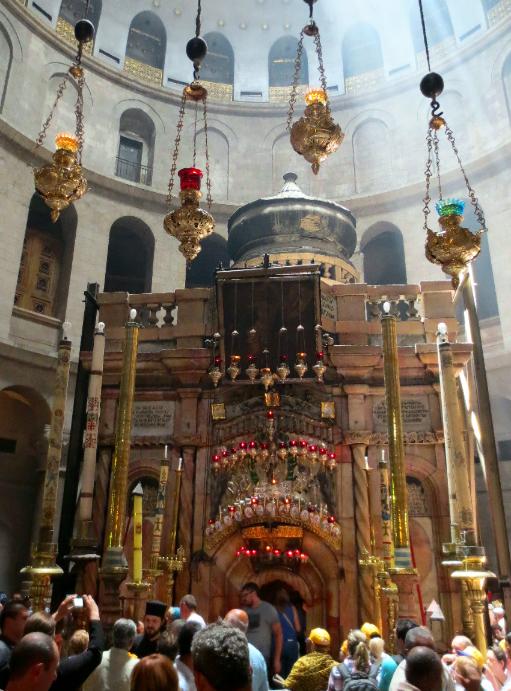
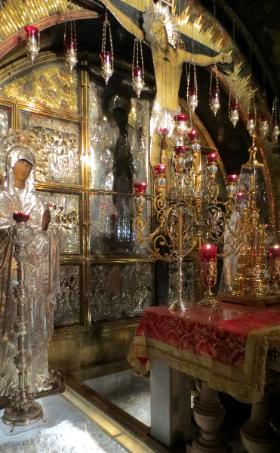
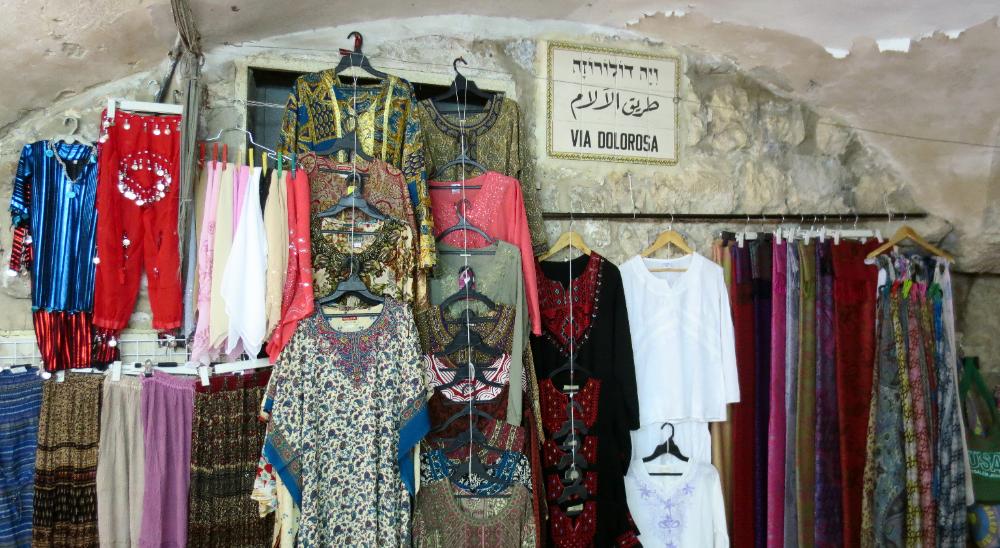
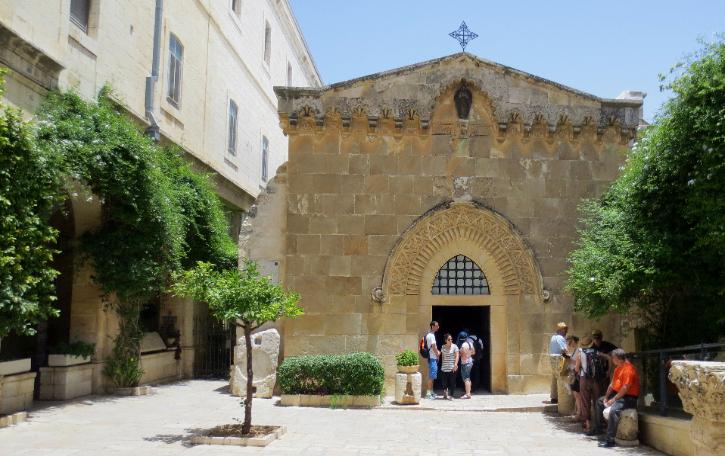
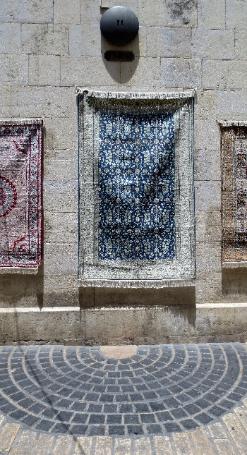
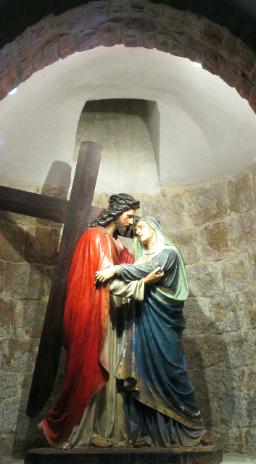
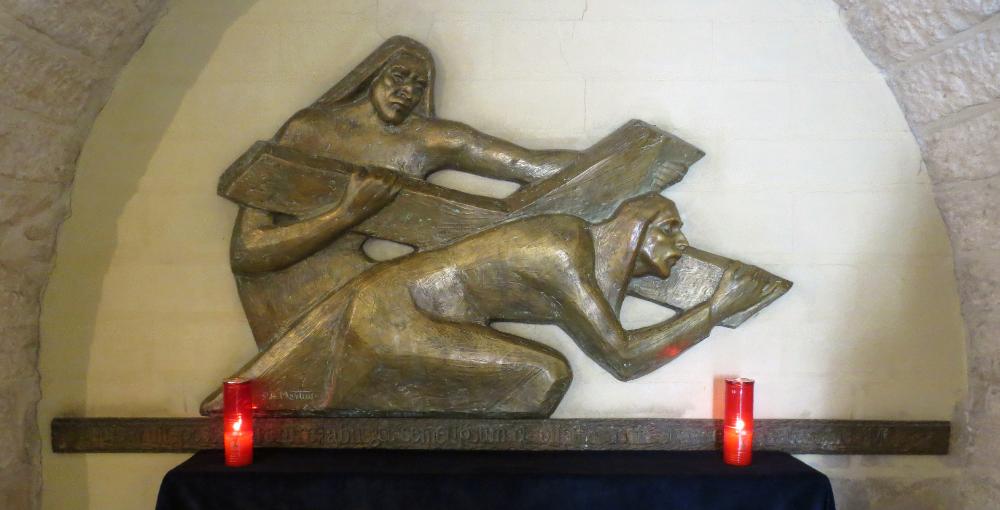
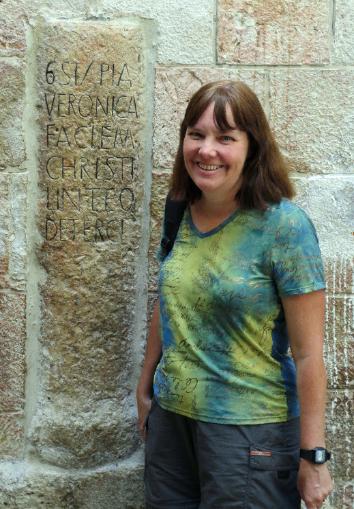
| A walk along the Via Dolorosa lets you see the traditional Stations of the Cross -- while shopping if you like |
| This is Station 1, where according to tradition Jesus was condemned to death and flogged by Roman soldiers |
| Station 3 marks where Jesus falls for the first time, and Station 4 is where he meets his grieving mother |
| Station 5 is where Simon of Cyrene helps Jesus carry the cross |
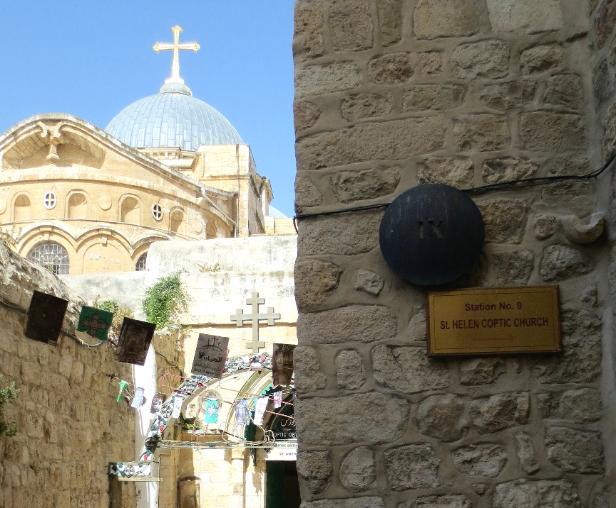
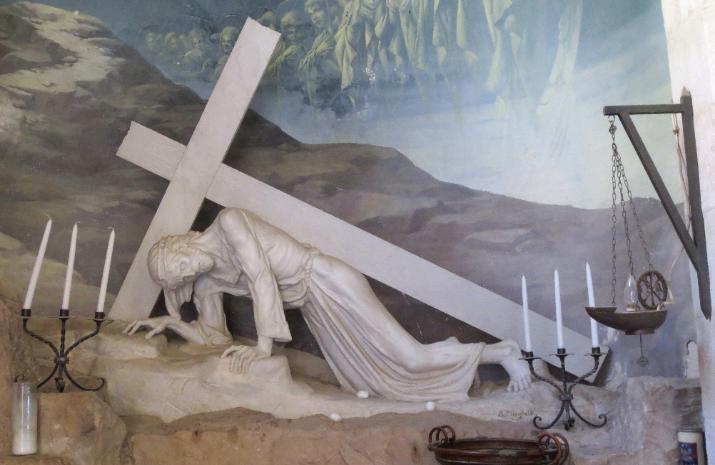
The Church of the Holy Sepulchre, also known
as the Church of the Resurrection, is one of
Christianity’s holiest sights. Located inside the
Old City, it is situated where Jesus is said to
have been crucified, buried, and then raised
from the dead -- so you can understand why it is
so important to Christians. While there is some
doubt about the site's authenticity (it seems
unlikely he would have been buried inside the
city walls), it has the weight of tradition behind
it, and this is where most pilgrims come to pay
him homage. Inside are the crucifixion site, the
Stone of Unction (where Jesus was prepared
for burial), and the sepulchre. For an alternate
location for the tomb of Jesus, you may also
want to visit the Garden Tomb just outside
Damascus Gate (see the bottom of this page).
The most interesting way to get to the church is
to walk the Via Dolorosa, the path Jesus is said
to have taken as he bore his cross to his own
crucifixion. The route is synonymous with the
Stations of the Cross. Station 1, for example, is
where Jesus is condemned to death, Station 2
where he picks up the cross, Station 3 where
he falls for the first time, and Station 4 where he
meets his grieving mother. In all, there are 14
stations, with the last five all being located
inside the Church of the Holy Sepulchre itself.
as the Church of the Resurrection, is one of
Christianity’s holiest sights. Located inside the
Old City, it is situated where Jesus is said to
have been crucified, buried, and then raised
from the dead -- so you can understand why it is
so important to Christians. While there is some
doubt about the site's authenticity (it seems
unlikely he would have been buried inside the
city walls), it has the weight of tradition behind
it, and this is where most pilgrims come to pay
him homage. Inside are the crucifixion site, the
Stone of Unction (where Jesus was prepared
for burial), and the sepulchre. For an alternate
location for the tomb of Jesus, you may also
want to visit the Garden Tomb just outside
Damascus Gate (see the bottom of this page).
The most interesting way to get to the church is
to walk the Via Dolorosa, the path Jesus is said
to have taken as he bore his cross to his own
crucifixion. The route is synonymous with the
Stations of the Cross. Station 1, for example, is
where Jesus is condemned to death, Station 2
where he picks up the cross, Station 3 where
he falls for the first time, and Station 4 where he
meets his grieving mother. In all, there are 14
stations, with the last five all being located
inside the Church of the Holy Sepulchre itself.
| A stone semicircle marks Station 2 (Jesus picks up the cross) |
| At Station 7 Jesus falls for the second time, at Station 8 he comforts the weeping women of Jerusalem, and at Station 9 he falls for the third time |
| This ancient stairway beckons you upward |
| Robin stands in a shaft of light from above |
| Visiting the Garden Tomb was one of our favorite experiences in Jerusalem. We instantly liked the feel of this place and spent some time soaking up the atmosphere. It is a Christian site located near the Muslim Quarter -- a five-minute walk outside Damascus Gate along Nablus Road. |
| The tomb is located next to a cliff face that really does look somewhat skull-like (Golgotha means “place of the skull”). Construction work has changed its look somewhat, but the photo at right shows how it would have looked in the late 1800s. |
| The tomb is cut out of solid rock and is not a natural cave (Matthew 27:60). It was located outside the city walls, where burials normally would have taken place at the time. |
| Whether or not this is the actual tomb (the exact dating of the tomb is disputed), it is easy to picture Jesus being buried here and gives a good idea of what a garden tomb might have looked like |
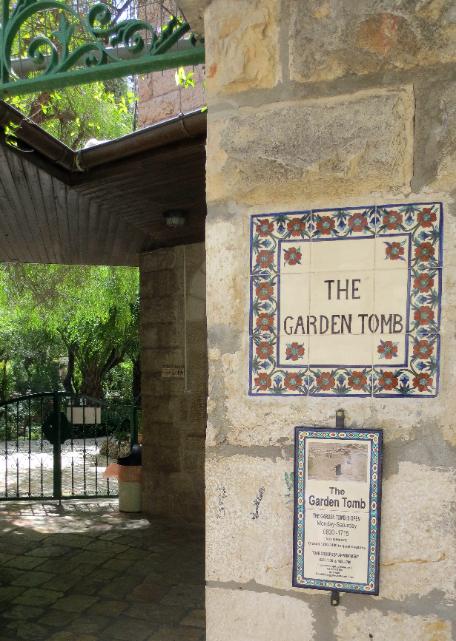
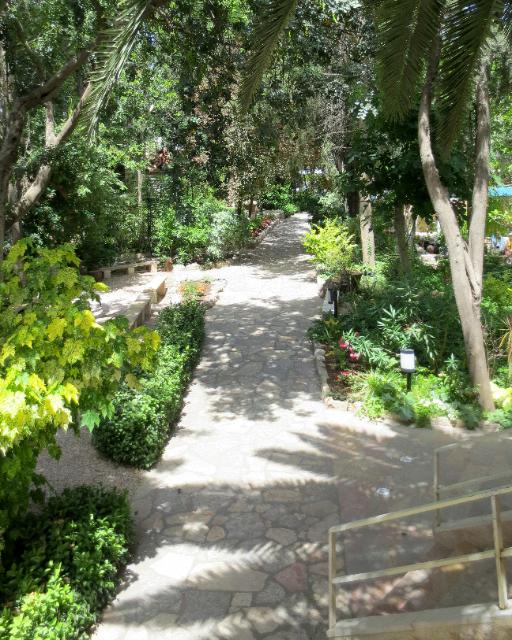
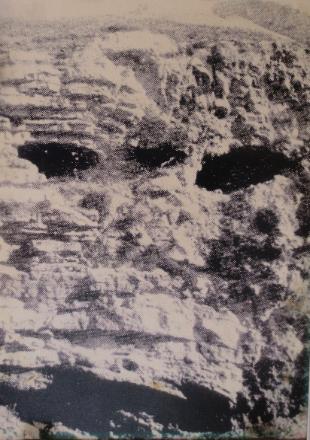
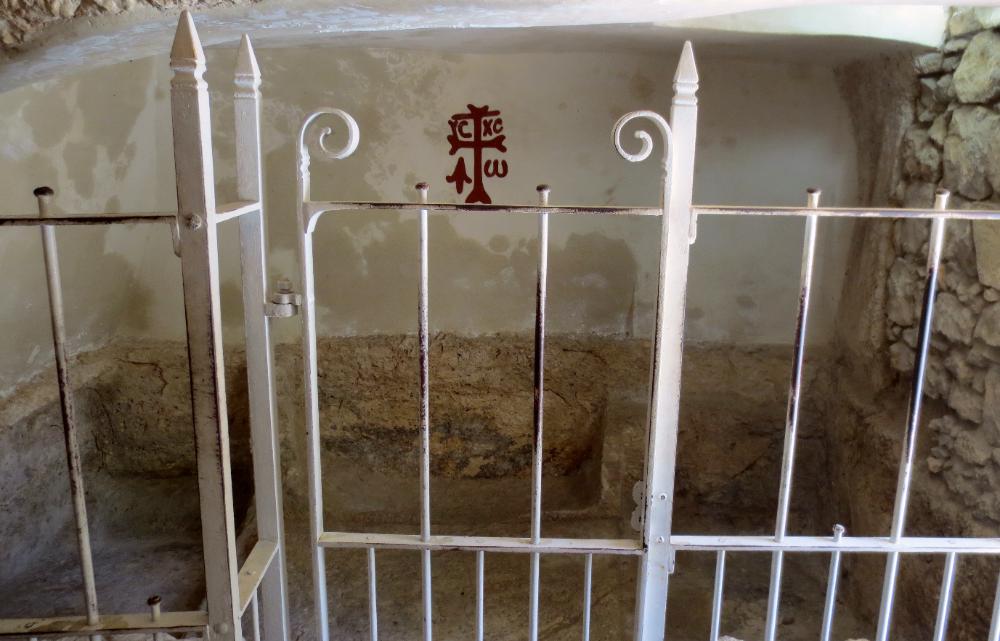
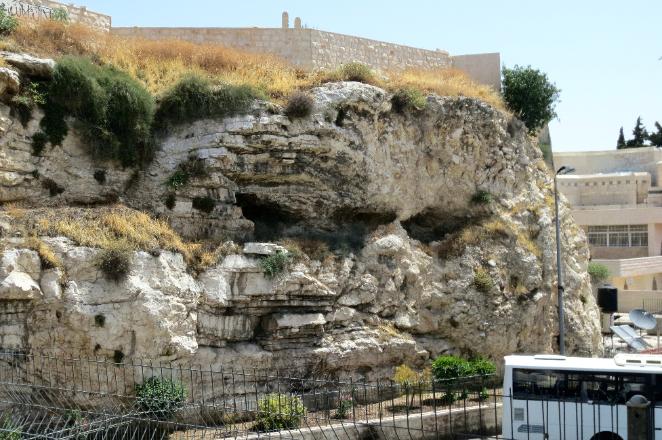
| The Garden Tomb |
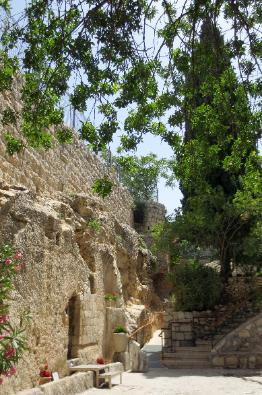
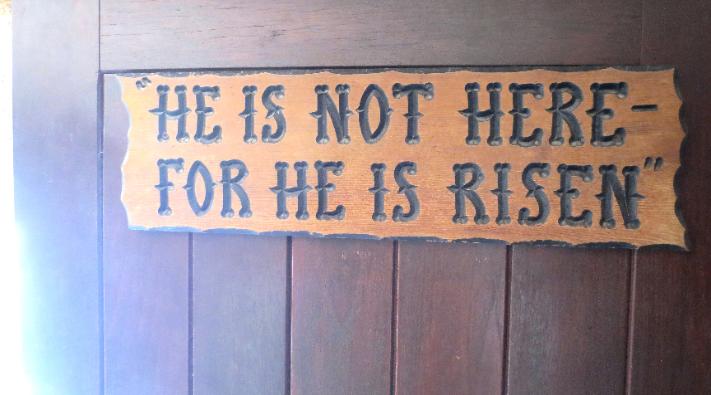
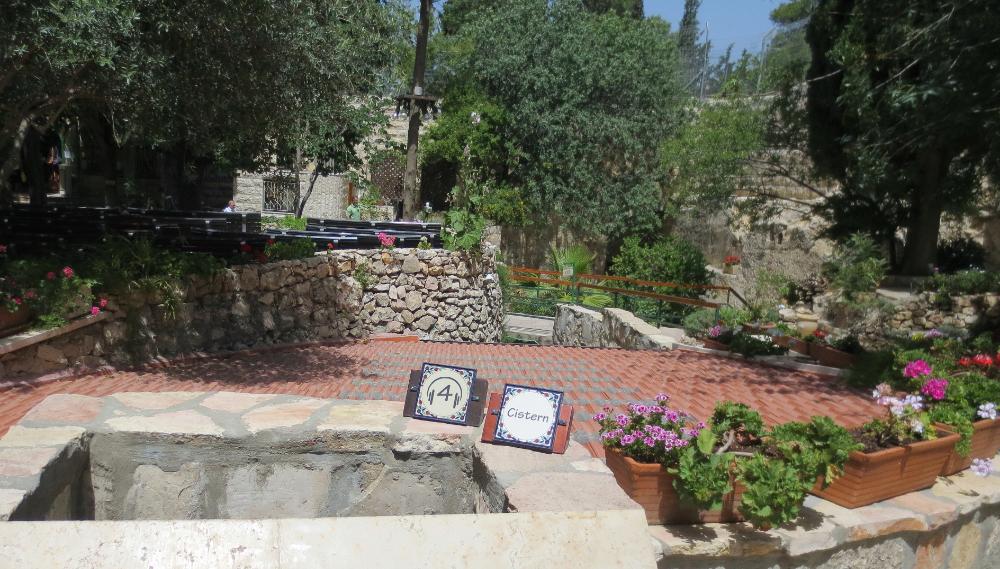
| This large rainwater cistern, along with the large winepress excavated here, suggest there may have been a vineyard here in Jesus' time, possibly the garden of a rich man like Joseph of Arimathea |